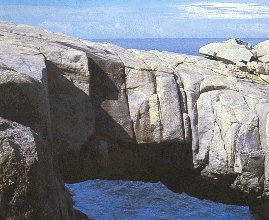|
|
|
Western Australia is the land of red earth and distant horizons, giant cattle runs and widespread mineral wealth. It has a superb climate, mag landscapes, with many land uses, the scenery is delightful.
History
It was formally proclaimed a colony on 18 June 1829 by Lieutenant-Governor James Stirling.
At first its development was slow due to continuous economic ills but the discovery of
gold at Coolgardie and Kalgoorlie quickly increased the population and gave the economy a
needy boost. Today WA is one of the most buoyant economies in the nation.
The people
Approximately half the population of Western Australia consist of folk born overseas or
interstate. Some of these people live relatively isolated lives in exploration camps and
cattle runs but most lead the regular lives. They emphasise outdoor activities, sports and
a generally relaxed lifestyle.
Economy
Mineral exports constitute more than half of of Western Australia's exports. The most
important of these being iron ore, alumina, nickel and mineral sands. Petroleum, natural
gas and diamond discoveries have also grown to such an extent as to influence world
markets. The state's largest primary industry would be cereal crops. There is more land
set aside for wheat-growing than in any other state. SW region holds the most rainfall,
therefore making it the heart of production of the State's fruit, vegies, wool and dairy
products. The region also holds vast forested areas of jarrah and karri, which are the
tallest hardwoods grown in Oz. To the N are open spaces of the Kimberley region where
almost half the State's beef cattle graze.



Nature Bridge, Albany
Lucky Bay, Esperance
The Pinnacles, Nambung National Park
| Perth | Western Australia Interesting Places |